Welcome to Visit Orkney Places
The Walkfo guide to things to do & explore in Orkney
![]() Visit Orkney places using Walkfo for free guided tours of the best Orkney places to visit. A unique way to experience Orkney’s places, Walkfo allows you to explore Orkney as you would a museum or art gallery with audio guides.
Visit Orkney places using Walkfo for free guided tours of the best Orkney places to visit. A unique way to experience Orkney’s places, Walkfo allows you to explore Orkney as you would a museum or art gallery with audio guides.
Visiting Orkney Walkfo Preview
Orkney is 10 miles (16 km) north of the coast of Caithness and has about 70 islands, of which 20 are inhabited. The largest island, Mainland, is often referred to as “the Mainland”, and has an area of 523 square kilometres (202 sq mi) The islands have been inhabited for at least 8,500 years, originally occupied by Mesolithic and Neolithic tribes and then by the Picts. The local people are known as Orcadians and speak a distinctive dialect of the Scots language. When you visit Orkney, Walkfo brings Orkney places to life as you travel by foot, bike, bus or car with a mobile phone & headphones.
Orkney Places Overview: History, Culture & Facts about Orkney
Visit Orkney – Walkfo’s stats for the places to visit
With 6 audio plaques & Orkney places for you to explore in the Orkney area, Walkfo is the world’s largest heritage & history digital plaque provider. The AI continually learns & refines facts about the best Orkney places to visit from travel & tourism authorities (like Wikipedia), converting history into an interactive audio experience.
Orkney history
Prehistory
The earliest known permanent settlement is at Knap of Howar, a Neolithic farmstead on Papa Westray, which dates from 3500 BC. The village of Skara Brae, Europe’s best-preserved Neolithic settlement, is believed to have been inhabited from around 3100 BC.
Iron Age
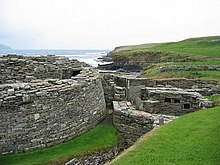
Excavations at Quanterness on the Mainland have revealed an Atlantic roundhouse built about 700 BC. The most impressive Iron Age structures of Orkney are the ruins of later round towers called “brochs” The nature and origin of these buildings is a subject of ongoing debate.
Norwegian rule
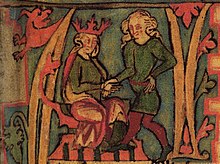
Both Orkney and Shetland saw a significant influx of Norwegian settlers during the late 8th and early 9th centuries. Vikings made the islands the headquarters of pirate expeditions carried out against Norway and the coasts of Scotland. Norwegian king Harald Fairhair (Harald Hårfagre) annexed the Northern Isles in 875.
Absorbed by Scotland
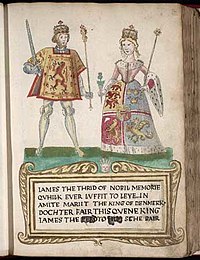
In 1468 Orkney was pledged by Christian I, in his capacity as King of Norway, as security against the payment of the dowry of his daughter Margaret, betrothed to James III of Scotland. However the money was never paid, and Orksney was absorbed by the Kingdom of Scotland in 1472. In the 17th century, Orcadians formed the overwhelming majority of employees of the Hudson’s Bay Company in Canada.
20th century
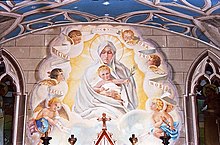
Scapa Flow played a major role in World War I and II. The German High Seas Fleet was transferred in its entirety to the base in 1918. Scuttled all the ships were salvaged, but the remaining wrecks are now a favoured haunt of recreational divers.
Overview of population trends
Orkney population peaked in the mid 19th century at 32,000 and declined for a century thereafter to a low of fewer than 18,000 in the 1970s. Declines were particularly significant in the outlying islands, some of which remain vulnerable to ongoing losses.
Orkney economy & business
Tourism
Report published in February 2020 stated that spending by visitors increased from £49.5 million in 2017 to £67.1 million in 2019. The primary attractions that encourage tourism include the “Heart of Neolithic Orkney” The Hoy area’s landscape is also attractive to visitors, with its scattered woodland, steep valleys, high cliffs and the famous Old Man.
Power
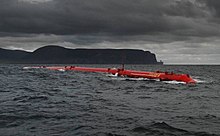
Orkney has significant wind and marine energy resources, and renewable energy has recently come into prominence. The islands are already using hydrogen to power vehicles, and it will soon be used to heat a local primary school. A new cable could be laid for exporting of energy to the mainland but another proposal has progressed rapidly since that time.
Transport
The shortest scheduled air service in the world is scheduled at two minutes’ duration but can take less than one minute if the wind is in the right direction. Loganair provides services to the Scottish mainland (Aberdeen, Edinburgh, Glasgow and Glasgow), as well as to Sumburgh Airport in Shetland. The main airport in Orkney is Kirkwall Airport, operated by Highland and Islands Airports.
Media
Orkney is served by a weekly local newspaper, The Orcadian, published on Thursdays. A local BBC radio station broadcasts twice daily, with local news and entertainment. Moray Firth Radio broadcasts throughout the island on AM and FM from Thurso.
Orkney etymology
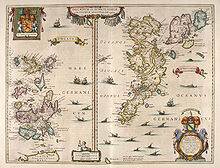
Pytheas of Massilia visited Britain – probably sometime between 322 and 285 BC – and described it as triangular in shape, with a northern tip called Orcas. Etymologists usually interpret the element orc- as a Pictish tribal name meaning “young pig” or “young boar” The Norse knew Mainland, Orkney as Megenland “Mainland” or as Hrossey “Horse Island”
Orkney geography / climate

Orkney lies between 58°41′ and 59°24′ north, and 2°22′ and 3°26′ west. The islands are notable for the absence of trees, partly accounted for by the strong winds. The Pentland Firth is a ten-kilometre-wide seaway between Brough Ness and Duncansby Head in Caithness.
Why visit Orkney with Walkfo Travel Guide App?
![]() You can visit Orkney places with Walkfo Orkney to hear history at Orkney’s places whilst walking around using the free digital tour app. Walkfo Orkney has 6 places to visit in our interactive Orkney map, with amazing history, culture & travel facts you can explore the same way you would at a museum or art gallery with information audio headset. With Walkfo, you can travel by foot, bike or bus throughout Orkney, being in the moment, without digital distraction or limits to a specific walking route. Our historic audio walks, National Trust interactive audio experiences, digital tour guides for English Heritage locations are available at Orkney places, with a AI tour guide to help you get the best from a visit to Orkney & the surrounding areas.
You can visit Orkney places with Walkfo Orkney to hear history at Orkney’s places whilst walking around using the free digital tour app. Walkfo Orkney has 6 places to visit in our interactive Orkney map, with amazing history, culture & travel facts you can explore the same way you would at a museum or art gallery with information audio headset. With Walkfo, you can travel by foot, bike or bus throughout Orkney, being in the moment, without digital distraction or limits to a specific walking route. Our historic audio walks, National Trust interactive audio experiences, digital tour guides for English Heritage locations are available at Orkney places, with a AI tour guide to help you get the best from a visit to Orkney & the surrounding areas.
“Curated content for millions of locations across the UK, with 6 audio facts unique to Orkney places in an interactive Orkney map you can explore.”
Walkfo: Visit Orkney Places Map
6 tourist, history, culture & geography spots
Orkney historic spots | Orkney tourist destinations | Orkney plaques | Orkney geographic features |
| Walkfo Orkney tourism map key: places to see & visit like National Trust sites, Blue Plaques, English Heritage locations & top tourist destinations in Orkney | |||
Best Orkney places to visit
Orkney has places to explore by foot, bike or bus. Below are a selection of the varied Orkney’s destinations you can visit with additional content available at the Walkfo Orkney’s information audio spots:
Visit Orkney plaques
![]() 0
0
plaques
here Orkney has 0 physical plaques in tourist plaque schemes for you to explore via Walkfo Orkney plaques audio map when visiting. Plaques like National Heritage’s “Blue Plaques” provide visual geo-markers to highlight points-of-interest at the places where they happened – and Walkfo’s AI has researched additional, deeper content when you visit Orkney using the app. Experience the history of a location when Walkfo local tourist guide app triggers audio close to each Orkney plaque. Currently No Physical Plaques.